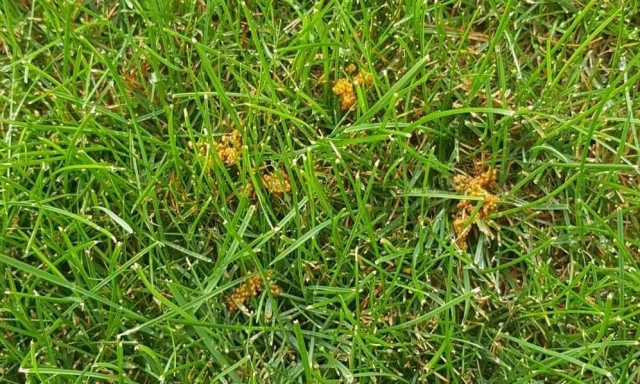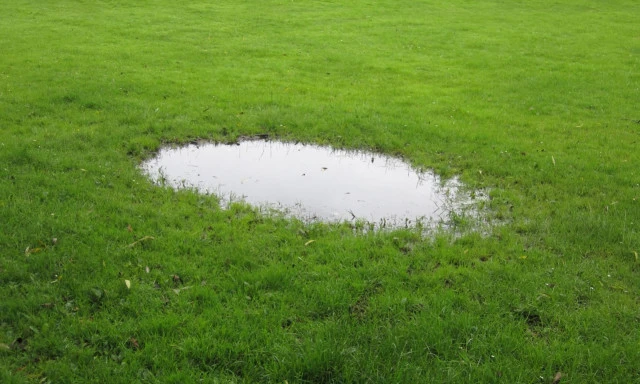Too Much or Too Little of a Good Thing? Have Thatch in Moderation
Thatch is the layer of organic material that builds up in a lawn below the green grass foliage and above the soil surface. It is largely made from dead grass clippings, dead stems and dead surface roots. The living grass stems will run through the layer and grass roots may grow into the layer.
In a healthy lawn the build-up of this dead material from lawn mowing clippings and naturally dying roots, shoots and leaves are balanced by the breakdown of the material by micro-organisms (bacteria and fungi), earthworms and other invertebrates. The nutrients are returned to the soil and help reduce the need for adding fertiliser to the lawn. A layer of thatch about 5-10 mm thick is good, it helps reduce moisture loss from the soil surface, acts to reduce weed emergence and insulates the soil and grass roots from frost damage.
Too Little Thatch
Too little thatch leaves bare soil in which weeds can germinate, the soil surface will be liable to dry out in summer and frost damage is more likely in the winter cold.
Too Much Thatch
However, if the build-up of thatch is faster than the breakdown, too much thatch can stop air and moisture reaching the roots and moisture trapped in the thick thatch can encourage fungal disease of the lawn grass.
Thatch in Moderation
You can help adjust the build-up of thatch by considering how you mow your lawn. Mulch mowing is when you leave the grass clippings on the lawn to break down, rather than collecting them in the mower catcher. Don't mulch when the grass has grown longer than 7 cm as a lot needs cut off (never cut grass down by more than 1/3 of its height), instead collect the clippings and compost them. Such long clippings would not easily get to the soil surface and would sit on top of the grass, smothering it. They would also take longer to break down, so the thatch builds up and becomes a moist mat where disease fungi and their spores can survive. Mulching lawnmowers cut up clippings to shorter lengths that will fall below the green grass leaves and are more easily broken down.
So, look at your lawn and examine the amount of thatch on the soil under the grass. If the soil is bare, set your mower to mulch and trim the lawn of 10-15 mm off the top. If the thatch is thicker than 5-10 mm then do not mulch and consider de-thatching by raking the thatch out using a grass rake or scarifier.
De-Thatching
If your lawn has excessive thatch (more than 2 cm deep), in early spring, and for small areas, use a thatching rake, which is a sharp-tined rake that rips the thatch out of the lawn. Rake the grass, digging deep to penetrate the thatch and loosen it. In early spring removing thatch by raking is best to prevent damaging new growth.
Alternatively, you can naturally dethatch your lawn by applying LawnPro D-Thatch to feed the micro-organisms that break the thatch down. D-Thatch is also in Turfclean & Green Rapid+ so you can weed, feed and dethatch your lawn in one easy application.
The best time to dethatch your whole lawn is in late summer/early autumn when the grass is actively growing. Unless the lawn is small a power dethatcher/scarifier is the best manual option but can damage your lawn for a period. You can rent a power dethatcher from most garden or hire centres.
Rake up the debris with a and place it in your compost heap or green waste and irrigate the lawn. It is then a good time to aerate your lawn by forking or using a coring machine. After aerating, over-seed with LawnPro Lawn Thickener.
When the job is finished, the lawn will look roughed up, but don't panic. It will recover and eventually look better than before. It will take about 3-4 weeks for the lawn to recover and show signs of new growth.
See To Mulch or Not To Mulch, That is the Question for more on mulching your lawn.


